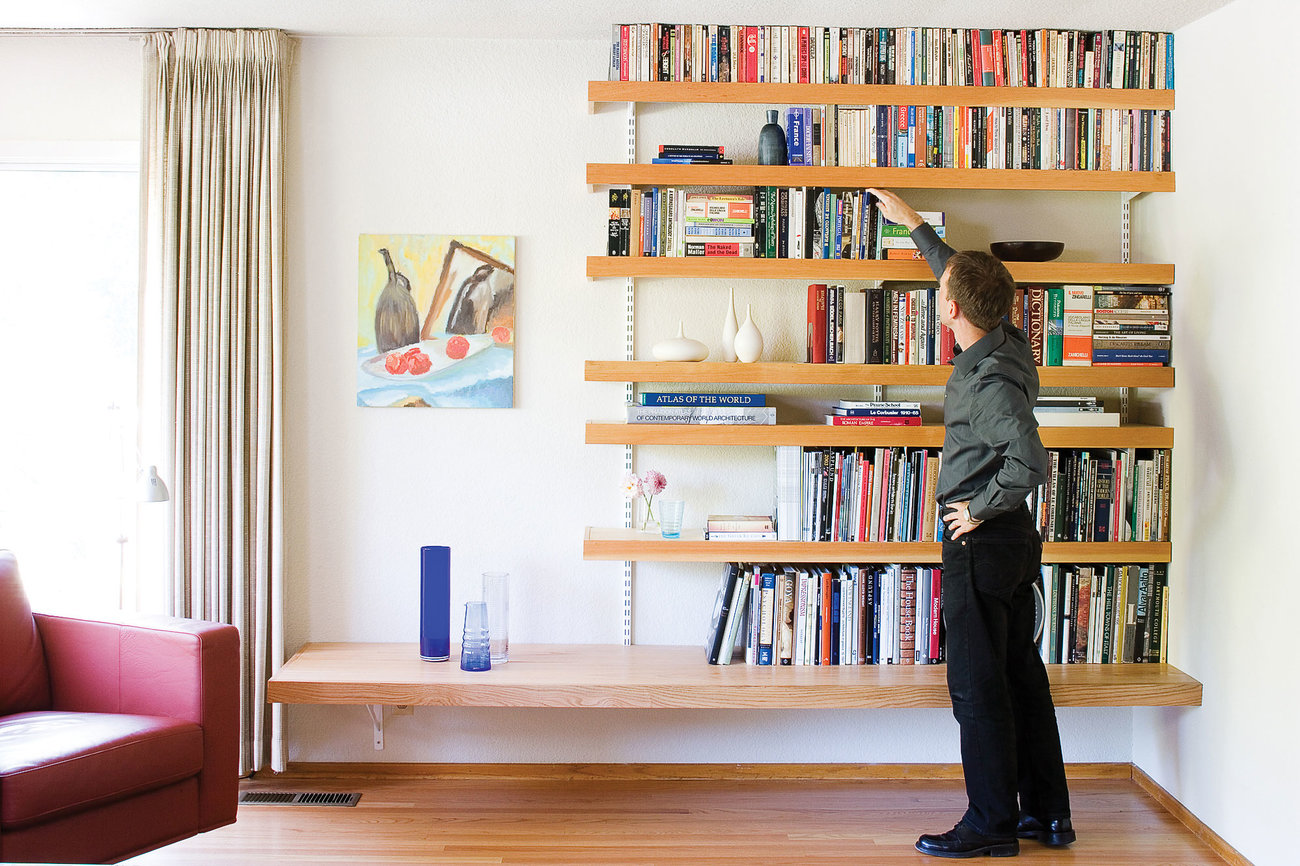
Easy Floating Shelves

Architect Stephen Atkinson wanted a built-in bookcase in his condo living room, but he couldn’t afford the $3,000 price tag. He favored floating shelves–which cantilever from the wall, have no side panels, and don’t touch the floor–in order to keep some breathing room at the bottom and not lose square footage in an already small space. But to build what he wanted would have meant tearing the wall apart. Instead, he purchased a metal wall shelving system (available at home improvement stores) and devised a clever way to dress it up.
Typical store-bought floating shelves are suitable only for displaying objects, as they have a weight capacity of 10 or so pounds. “You can’t put much of anything on there,” says Atkinson. “And books are phenomenally heavy.” That’s why he created what might be called built-in floaters of pine and red oak, with seriously strong support (see “Steps to a Better Shelf,” below) and the ability to be repositioned if he wishes. The total cost of the project was $500.
DESIGN: Stephen Atkinson, Studio Atkinson, Palo Alto, CA ( www.studioatkinson.com or 650/321-6118)
